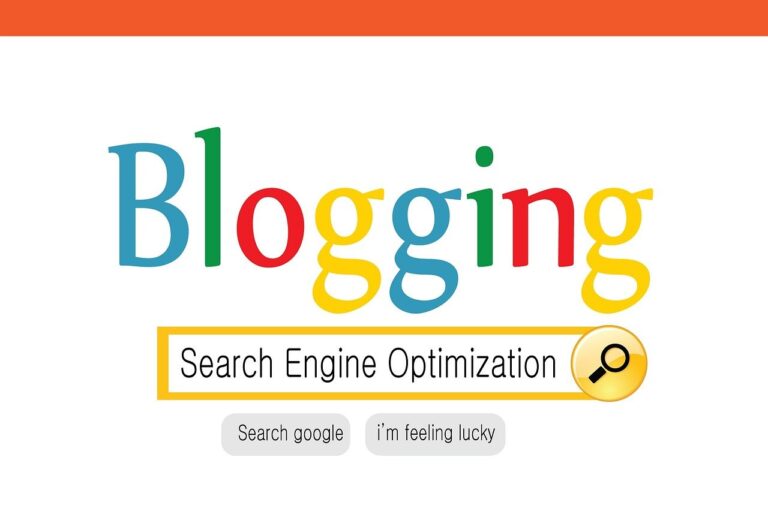Building lasting relationships in holistic practices requires more than just providing excellent care during sessions. It’s about creating a continuous connection with clients that extends beyond the treatment room.
Consistent follow-up is a crucial element in nurturing these relationships, fostering trust, and ensuring long-term client satisfaction and success.

Follow-up in holistic practices can take many forms, from simple check-in calls to personalized wellness tips. This ongoing communication demonstrates your commitment to clients’ well-being and allows you to address any concerns or questions that may arise between appointments.
By maintaining regular contact, you create a supportive environment that encourages clients to stay engaged with their healing journey.
Effective follow-up also provides opportunities to gather valuable feedback, track progress, and adjust treatment plans as needed. This proactive approach not only enhances the quality of care but also strengthens the practitioner-client bond, leading to improved outcomes and increased client retention.
Key Takeaways
- Regular follow-up enhances client relationships and treatment effectiveness
- Consistent communication demonstrates commitment and fosters trust
- Proactive contact allows for timely adjustments to treatment plans
The Critical Role of Follow-Up in Holistic Practices

Follow-up is a crucial component of holistic healing practices. It allows you to track your progress and make necessary adjustments to your treatment plan.
Regular check-ins with your practitioner help maintain the strong relationship founded on mutual respect and open communication. This ongoing dialogue ensures your concerns are addressed promptly.
Follow-ups provide an opportunity to:
- Assess the effectiveness of current treatments
- Discuss any new symptoms or changes in your condition
- Modify your care plan as needed
- Address any questions or concerns you may have
By consistently engaging in follow-up sessions, you allow your practitioner to tailor treatment to your individual characteristics. This personalized approach can significantly improve your outcomes.
Regular follow-ups also show your commitment to the healing process, which can positively impact your overall progress.
Your practitioner can use follow-up sessions to provide additional support, guidance, and resources. This ongoing care ensures that your emotional and physical needs are continually met throughout your healing journey.
Benefits of Consistent Client Contact
Regular communication with clients yields significant advantages for holistic practitioners. Maintaining ongoing connections enhances client experiences, improves treatment outcomes, and contributes to sustained practice growth.
Enhancing Client Satisfaction
Consistent contact demonstrates your commitment to client well-being. When you follow up regularly, you show clients that you value their progress and care about their journey.
This attentiveness builds trust and strengthens your professional relationship. Clients feel supported and appreciated, leading to increased satisfaction with your services.
Regular check-ins allow you to address concerns promptly, preventing small issues from escalating. You can also gather feedback to refine your approach and tailor your services to individual needs.
Improving Treatment Outcomes
Frequent communication enables you to monitor client progress more effectively. You can track changes, adjust treatments as needed, and provide timely guidance.
This ongoing support helps clients stay motivated and accountable. When you maintain contact, you can offer encouragement during challenging periods and celebrate milestones together.
Consistent follow-up also allows you to reinforce key concepts and practices. You can answer questions, clarify instructions, and ensure clients are implementing your recommendations correctly.
Fostering Long-Term Practice Growth
Building strong client relationships through consistent contact promotes client retention. Satisfied clients are more likely to continue working with you long-term.
Loyal clients often become advocates for your practice. They may refer friends and family, contributing to organic growth through word-of-mouth marketing.
Regular interactions provide opportunities to introduce new services or programs. You can educate clients about additional ways you can support their wellness journey, potentially increasing your revenue streams.
By maintaining connections, you create a community around your practice. This sense of belonging can differentiate your services and foster a positive reputation in your field.
Practical Strategies for Effective Follow-Up Communication
Implementing targeted follow-up strategies strengthens client relationships and enhances the success of holistic practices. These techniques focus on personalization, timing, and leveraging technology to maintain meaningful connections.
Personalized Follow-Up Techniques
Personalizing your follow-up communication shows clients you value their unique needs and experiences. Begin by referencing specific details from your previous interactions. This demonstrates attentiveness and builds trust.
Create custom follow-up plans for each client based on their goals and treatment progress. Tailor your message content to address individual concerns and celebrate personal milestones.
Consider using different communication channels based on client preferences. Some may appreciate a phone call, while others prefer email or text messages.
Offer personalized resources or recommendations relevant to each client’s journey. This could include articles, exercises, or lifestyle tips that complement their treatment plan.
Optimal Timing for Follow-Ups
Timing is crucial for effective follow-up communication. Reach out within 24-48 hours after an initial consultation or treatment session. This promptness shows your commitment and allows you to address any immediate questions or concerns.
Establish a regular follow-up schedule based on the client’s needs and treatment frequency. For ongoing treatments, consider weekly or bi-weekly check-ins.
Be mindful of significant dates such as treatment milestones or personal events mentioned by the client. A timely message on these occasions can strengthen your connection.
Avoid contacting clients too frequently, as this may feel intrusive. Strike a balance between being supportive and respecting their space.
Utilizing Technology for Follow-Up
Embrace technology to streamline and enhance your follow-up processes. Use customer relationship management (CRM) software to track client interactions, set reminders, and store important notes.
Implement automated email systems for sending appointment reminders and follow-up messages. Ensure these communications maintain a personal touch by including customizable fields.
Consider offering virtual follow-up sessions through video conferencing platforms. This can be particularly convenient for clients with busy schedules or those living far from your practice.
Explore the use of secure messaging apps or patient portals for ongoing communication. These tools allow clients to reach out easily with questions or updates between sessions.
Building Strong Client Relationships Through Follow-Up
Effective follow-up is crucial for nurturing client relationships in holistic practices. It demonstrates your commitment to client care and ensures continuity in treatment plans. Regular check-ins allow you to address concerns promptly and reinforce your recommendations.
Establishing Trust and Rapport
Building trust starts with consistent communication. Schedule regular follow-ups after initial consultations or treatments. This shows clients you value their progress and well-being.
Personalize your approach for each client. Remember details from previous interactions and reference them in your follow-ups. This personal touch helps clients feel seen and understood.
Be punctual and reliable with your follow-up communications. If you promise to check in, make sure you do. This reliability builds credibility and shows professionalism.
Use a mix of communication methods based on client preferences. Some may prefer phone calls, while others might respond better to emails or text messages.
Addressing Client Concerns and Feedback
Create a safe space for clients to express concerns or provide feedback. Actively listen without judgment and ask clarifying questions to fully understand their perspective.
Respond to concerns promptly and professionally. Acknowledge the issue and propose solutions or adjustments to their treatment plan.
Use feedback as an opportunity for improvement. Thank clients for their input and explain how you’ll address their concerns moving forward.
Follow up on resolved issues to ensure client satisfaction. This shows your commitment to their experience and continuous improvement of your practice.
Reinforcing Treatment Plans and Recommendations
Provide clear, written summaries of treatment plans and recommendations after each session. This helps clients remember key points and stay on track.
Use follow-ups to check on client progress and adherence to recommendations. Offer encouragement and support for their efforts.
Be prepared to adjust plans based on client feedback and results. Flexibility shows you’re attentive to their individual needs and progress.
Share relevant resources or information that supports their treatment plan. This could include articles, videos, or exercises that reinforce your recommendations.
Case Studies and Success Stories

Real-world examples demonstrate the power of effective follow-up in holistic practices. Practitioners who prioritize ongoing communication see improved client outcomes and stronger relationships.
Examples of Successful Follow-Up Practices
Building trust through transparency is key to successful follow-up. One acupuncturist sends personalized emails 48 hours after each session, checking on clients’ progress and offering support.
A nutritionist uses a mobile app to track clients’ food intake and symptoms. She reviews the data weekly, providing tailored feedback and adjustments to meal plans.
A yoga studio implements a “buddy system” where instructors call new students after their first week of classes. This personal touch increases retention rates by 30%.
Lessons Learned from Holistic Practitioners
Consistency in communication is crucial. Successful practitioners set clear expectations for follow-up frequency and stick to them.
Personalization matters. Generic check-ins are less effective than messages tailored to each client’s unique needs and goals.
Timing is important. Follow-ups scheduled too soon may feel intrusive, while waiting too long can lead to disengagement.
Multi-channel approaches work best. Combining email, phone calls, and in-person check-ins caters to different communication preferences.
Challenges and Solutions in Follow-Up Practices

Follow-up practices in holistic healthcare face unique obstacles that can hinder patient care. Identifying these challenges and implementing effective solutions is crucial for maintaining strong patient relationships and ensuring optimal health outcomes.
Common Obstacles in Follow-Up Communication
Busy schedules often lead to missed appointments and inconsistent communication. Patients may forget follow-up appointments or struggle to find time for them. Cultural and language barriers can also impede effective communication between practitioners and patients.
Limited resources and staffing may restrict the time available for thorough follow-ups. Some patients may lack motivation to continue treatment, especially if they start feeling better.
Technology issues, such as unreliable internet connections or lack of access to digital platforms, can disrupt remote follow-up sessions. Privacy concerns might make some patients hesitant to share sensitive health information during follow-ups.
Effective Solutions to Overcome Challenges
Implement automated appointment reminders through text messages or emails to reduce no-shows. Offer flexible scheduling options, including evening and weekend appointments, to accommodate diverse patient needs.
Utilize translation services or multilingual staff to bridge language gaps. Provide cultural competency training to your team to enhance cross-cultural communication.
Prioritize follow-ups by allocating dedicated time slots for patient check-ins. Educate patients on the importance of ongoing care to boost their motivation. Consider offering incentives for consistent follow-up participation.
Invest in user-friendly telemedicine platforms to facilitate remote follow-ups. Ensure strict data protection measures are in place to address privacy concerns. Provide clear explanations of your privacy policies to build trust with patients.
Conclusion

Building lasting relationships through effective follow-up is crucial in holistic practices.
By prioritizing consistent communication, you can foster trust and enhance patient outcomes.
Remember these key points:
- Set aside time for developing holistic, needs-based relationships
- Provide predictable and accessible care with continuous follow-up
- Cultivate self-awareness to improve interactions with patients
Implementing a relationship-based care model can strengthen your connection with patients. This approach emphasizes caring for self, colleagues, and patients.
To ensure long-term success, consider:
- Developing a clear intervention logic model
- Designing strategies for patient retention
- Addressing missing data effectively
By focusing on these elements, you can create enduring partnerships that extend beyond the timeframe of individual projects. Your efforts in building and maintaining relationships will contribute to more profound and lasting outcomes in your holistic practice.
Frequently Asked Questions

Effective follow-up strategies are crucial for building lasting relationships in holistic health practices.
Practitioners can leverage various techniques and technologies to maintain client engagement while respecting boundaries.
What strategies can be employed to maintain long-term client relationships in holistic health practices?
Fostering healthy relationships in holistic practices requires consistent communication.
You can schedule regular check-ins, offer personalized wellness tips, and create a client loyalty program.
Sending birthday greetings or holiday wishes adds a personal touch. Hosting educational workshops or webinars keeps clients engaged and informed about your services.
How often should practitioners reach out to clients for effective follow-up without being intrusive?
The frequency of follow-ups depends on the client’s needs and treatment plan.
A general guideline is to contact clients 1-2 weeks after their initial visit, then monthly or quarterly.
You can ask clients about their preferred communication frequency during their first appointment. This approach respects their boundaries while maintaining connection.
What role does follow-up play in the success of a holistic practice?
Follow-up is essential for holistic wellness.
It helps monitor client progress, adjust treatment plans, and address emerging concerns.
Regular follow-ups demonstrate your commitment to client well-being, fostering trust and loyalty. This practice can lead to increased client retention and positive word-of-mouth referrals.
Can you provide examples of effective follow-up techniques that encourage ongoing client engagement?
Send personalized progress reports highlighting achievements and areas for improvement.
Offer mini-consultations via phone or video call to address quick questions or concerns.
Create a private online community where clients can share experiences and support each other. Develop a newsletter with wellness tips, success stories, and updates about your practice.
What are the best practices for integrating follow-up into a holistic care plan?
Incorporate follow-up milestones into each client’s care plan from the outset.
Set clear expectations about the follow-up process during the initial consultation.
Use a holistic approach by addressing physical, emotional, and spiritual aspects in your follow-ups. Tailor your communication style to each client’s preferences and needs.
How does technology aid in streamlining the follow-up process for holistic health practitioners?
Practice management software can automate appointment reminders and follow-up scheduling. It can also help in implementing secure messaging systems for quick, HIPAA-compliant client communication.
Additionally, telehealth platforms can be used for virtual follow-up sessions, increasing accessibility for clients. You can also use customer relationship management (CRM) tools to track client interactions and preferences.






